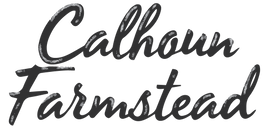The Timeless Appeal of Tallow: Nature’s Multi-Use Wonder
Tallow, often considered an old-fashioned ingredient, has made a major comeback in recent years. Used for centuries in everything from cooking to skincare, this versatile animal fat is now catching the eye of modern consumers who are eager to embrace natural, sustainable products. In this post, we’ll explore what tallow is, its historical significance, and the reasons it’s experiencing a resurgence in today’s health-conscious world.
What is Tallow?
Tallow is rendered fat, typically derived from cattle or sheep. The fat is carefully melted down and purified to create a solid fat with a variety of uses. While tallow is most commonly associated with cooking and baking, it has a long history as a key ingredient in soaps, candles, and even cosmetics.
Unlike processed vegetable oils, tallow contains beneficial fats that our bodies can recognize and process efficiently. It’s rich in nutrients such as vitamins A, D, E, and K, and essential fatty acids, making it an attractive choice for both culinary and skincare purposes.
The History of Tallow
Tallow has been used for centuries, well before modern vegetable oils and synthetic alternatives became widespread. In the past, tallow was a staple in cooking, lighting, and even preserving food. Before refrigeration, tallow was a key element in making jerky or preserving meats, as it acted as a protective barrier against bacteria.
In addition to its culinary uses, tallow played a prominent role in personal care products, especially soaps. Historically, tallow-based soaps were prized for their ability to cleanse without drying out the skin, thanks to the natural fats and oils present in the fat. Candles made from tallow were also common before the advent of paraffin wax, offering a clean, bright light for households.

Tallow in the Modern World
While tallow might seem like a relic of the past, its usefulness remains undeniable in the modern world. Here’s why it’s making a comeback:
-
Sustainable and Eco-Friendly
One of the driving factors behind tallow's resurgence is the growing interest in sustainability. Unlike plant-based oils, which often require large amounts of land, water, and resources to cultivate, tallow is a byproduct of the meat industry. By using every part of the animal, tallow helps reduce waste, making it a more environmentally friendly choice compared to other fats. -
Nutrient-Rich
Tallow is packed with fat-soluble vitamins like A, D, E, and K, which are crucial for maintaining healthy skin, bones, and immune function. It’s also rich in conjugated linoleic acid (CLA), which has been linked to anti-inflammatory properties and improved metabolism. -
Gentle on Skin
Tallow is known for its ability to nourish and hydrate the skin. It has a similar structure to human skin, making it highly compatible and easily absorbed. Many people find that tallow-based skincare products provide deep hydration without causing irritation or clogging pores. This is why tallow is often used in soaps, balms, and moisturizers. -
Culinary Uses
When used in cooking, tallow adds a rich, savory flavor to dishes. It has a high smoking point, making it ideal for frying or roasting at high temperatures without breaking down into unhealthy compounds. Traditional recipes like beef stew or roast potatoes often benefit from the depth of flavor tallow imparts. Plus, it’s free of the trans fats found in some hydrogenated oils, making it a healthier option for cooking. -
Animal Welfare and Ethical Considerations
Many people today are looking for ways to ensure that the products they use are ethically sourced. Since tallow is a byproduct of meat production, it can often be sourced from animals that are raised with higher standards of care, especially from small farms that prioritize humane treatment.
How to Use Tallow
-
In the Kitchen: Tallow can replace butter, lard, or vegetable oils in most recipes. It’s great for frying, sautéing, and even baking. Try using it in classic dishes like beef stew, roasted vegetables, or even in pie crusts for a rich, flaky texture.
-
For Skincare: Tallow-based soaps and balms are a popular choice for those with dry or sensitive skin. To make a simple tallow balm, melt down some tallow and add a few drops of essential oils like lavender or tea tree for added fragrance and benefits. You can also use tallow as a moisturizer by gently massaging a small amount into your skin.
-
For Candles: Traditional tallow candles are easy to make at home. By melting tallow and pouring it into a mold with a wick, you can create an eco-friendly, long-lasting light source.
Final Thoughts
In today’s world, where more and more people are looking for natural, sustainable products, tallow offers a wealth of benefits that can’t be overlooked. Whether used in cooking, skincare, or as a household item, tallow is a true multitasker. By embracing this ancient yet modern ingredient, we not only benefit from its numerous advantages but also help reduce waste in the process. So next time you come across tallow, consider giving it a try—your skin and your taste buds will thank you!
Try our Whipped Tallow Body Balm or Tallow Soap Here!

